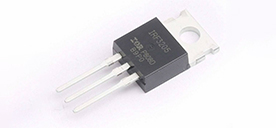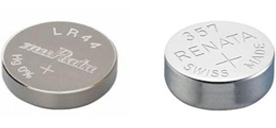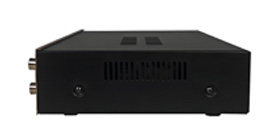Fully Differential Amplifiers: Signal Enhancement and Common Mode Rejection
2024/2/2 9:49:47
Views:
The fully differential amplifier is a common circuit design and is used for signal amplification to suppress common mode interference. Differential signal amplification, which cancels common-mode signal interference, is achieved by using two phase-reversed input signals. Widely used, including communication systems, audio equipment, sensor interfaces and other fields.
How a fully differential amplifier works
A fully differential amplifier consists of two complementary output amplifiers, one with the same output and input signals in phase, and the other with the opposite output and input signals in phase. The input signal difference will be amplified and the common mode signal will cancel. The working principle of a fully differential amplifier is as follows:
Input signal: The input signal of the fully differential amplifier is two differential signals, the positive phase signal (INP) and the negative phase signal (INN). The two signals are usually symmetrical to each other, with the same frequency and amplitude.
Differential amplification: the positive phase signal (INP) passes through the amplifier and a positive phase differential signal (OUTP) is output. The negative phase signal (INN) passes through the amplifier and outputs a negative phase differential signal (OUTN). The gains of both amplifiers are usually equal.
Common mode rejection: Since the input signal is in opposite phase, the common mode noise cancels out at the output. Because common mode noise affects both amplifiers in the same way, the outputs subtract from each other.
Differential output: The final output differential signal is the voltage difference between OUTP and OUTN. The difference is adjusted by the amplifier design parameters to amplify the input signal.
Structural features of fully differential amplifier:
Dual amplifier structure: A fully differential amplifier consists of two amplifiers and is used for differential signal amplification. Make differential signal amplification more stable and reliable.
Phase reversal: The input signal passes through an amplifier to produce an output with the same phase as the input signal; another amplifier produces an output with the opposite phase of the input signal. The phase reversal feature cancels common mode interference.
High common-mode rejection ratio: The fully differential amplifier has a high common-mode rejection ratio and filters out common-mode noise. More reliable signal processing, especially in high-noise environments.
Wide bandwidth: Fully differential amplifiers typically have wide bandwidth and handle high-frequency signals. Broadband signal processing is very useful in high-speed data transmission.
Fully differential amplifiers have a wide range of applications, including but not limited to the following aspects:
Communication system: Fully differential amplifier plays an important role in communication system. It is used in the design of line drivers, signal amplification receiver front-ends, etc. Provides higher signal amplification gain common mode rejection ratio and improves communication signal quality and reliability. Commonly used in fields such as optical fiber communications and wireless communications data transmission.
Audio equipment: Audio equipment is widely used in audio signal amplification processing. Provides clearer and more stable audio output common mode noise cancellation capabilities. It is often used in the design of audio equipment such as power amplifiers, mixers, and audio interfaces to achieve higher fidelity and dynamic range of audio signals.
Sensor interface: The sensor interface circuit requires weak sensor signal amplification processing. Provides higher gain anti-interference capability to enable accurate detection and measurement of sensor signals. Used for pressure sensor, temperature sensor, optical sensor sensor interface circuit design.
Data acquisition system: Data acquisition system signal amplification and filtering. The amplification of weak sensor signals is suitable for canceling the influence of common mode noise in the data collection range. It is widely used in industrial automation, experimental measurement instruments and equipment and other fields to improve the accuracy and stability of data acquisition systems.
High-speed data communication: high-speed data communication signal driver amplification. It has a wider bandwidth and faster response speed, and is suitable for high-speed signal transmission and data exchange. Data centers and computer network high-speed communication systems play an important role in ensuring reliable data transmission and processing speed.
How a fully differential amplifier works
A fully differential amplifier consists of two complementary output amplifiers, one with the same output and input signals in phase, and the other with the opposite output and input signals in phase. The input signal difference will be amplified and the common mode signal will cancel. The working principle of a fully differential amplifier is as follows:
Input signal: The input signal of the fully differential amplifier is two differential signals, the positive phase signal (INP) and the negative phase signal (INN). The two signals are usually symmetrical to each other, with the same frequency and amplitude.
Differential amplification: the positive phase signal (INP) passes through the amplifier and a positive phase differential signal (OUTP) is output. The negative phase signal (INN) passes through the amplifier and outputs a negative phase differential signal (OUTN). The gains of both amplifiers are usually equal.
Common mode rejection: Since the input signal is in opposite phase, the common mode noise cancels out at the output. Because common mode noise affects both amplifiers in the same way, the outputs subtract from each other.
Differential output: The final output differential signal is the voltage difference between OUTP and OUTN. The difference is adjusted by the amplifier design parameters to amplify the input signal.
Structural features of fully differential amplifier:
Dual amplifier structure: A fully differential amplifier consists of two amplifiers and is used for differential signal amplification. Make differential signal amplification more stable and reliable.
Phase reversal: The input signal passes through an amplifier to produce an output with the same phase as the input signal; another amplifier produces an output with the opposite phase of the input signal. The phase reversal feature cancels common mode interference.
High common-mode rejection ratio: The fully differential amplifier has a high common-mode rejection ratio and filters out common-mode noise. More reliable signal processing, especially in high-noise environments.
Wide bandwidth: Fully differential amplifiers typically have wide bandwidth and handle high-frequency signals. Broadband signal processing is very useful in high-speed data transmission.
Fully differential amplifiers have a wide range of applications, including but not limited to the following aspects:
Communication system: Fully differential amplifier plays an important role in communication system. It is used in the design of line drivers, signal amplification receiver front-ends, etc. Provides higher signal amplification gain common mode rejection ratio and improves communication signal quality and reliability. Commonly used in fields such as optical fiber communications and wireless communications data transmission.
Audio equipment: Audio equipment is widely used in audio signal amplification processing. Provides clearer and more stable audio output common mode noise cancellation capabilities. It is often used in the design of audio equipment such as power amplifiers, mixers, and audio interfaces to achieve higher fidelity and dynamic range of audio signals.
Sensor interface: The sensor interface circuit requires weak sensor signal amplification processing. Provides higher gain anti-interference capability to enable accurate detection and measurement of sensor signals. Used for pressure sensor, temperature sensor, optical sensor sensor interface circuit design.
Data acquisition system: Data acquisition system signal amplification and filtering. The amplification of weak sensor signals is suitable for canceling the influence of common mode noise in the data collection range. It is widely used in industrial automation, experimental measurement instruments and equipment and other fields to improve the accuracy and stability of data acquisition systems.
High-speed data communication: high-speed data communication signal driver amplification. It has a wider bandwidth and faster response speed, and is suitable for high-speed signal transmission and data exchange. Data centers and computer network high-speed communication systems play an important role in ensuring reliable data transmission and processing speed.
Related Information
-
-
Phone
+86 135 3401 3447 -
Whatsapp





